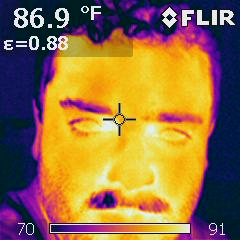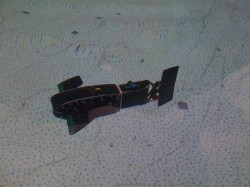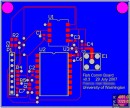After I finished speaking about engineering I brought out one of my company’s gyro-stabilized camera gimbals. This one, in particular, has both an optical and false-color FLIR Photon infrared camera. The gimbal is able to autonomously track objects while they move and while the gimbal itself is perturbed by wind and other disturbances. The students thought that was incredibly cool as I tracked their movements using the optical camera. Then I turned out the lights and switched to infrared mode. My audience lit up like a Christmas tree under infrared and I was greeted with a resounding “cool…!” I had one of the students put her hand against a wall for a few seconds and the camera picked up the hand-shaped residual heat signature. I also had one student walk around the room trying to escape the gimbal’s gaze. He was successful but not immediately!
I have given presentations about engineering and technology to grade-school and high school students in the past and I enjoy it every time. I think I made a few converts on this run!




